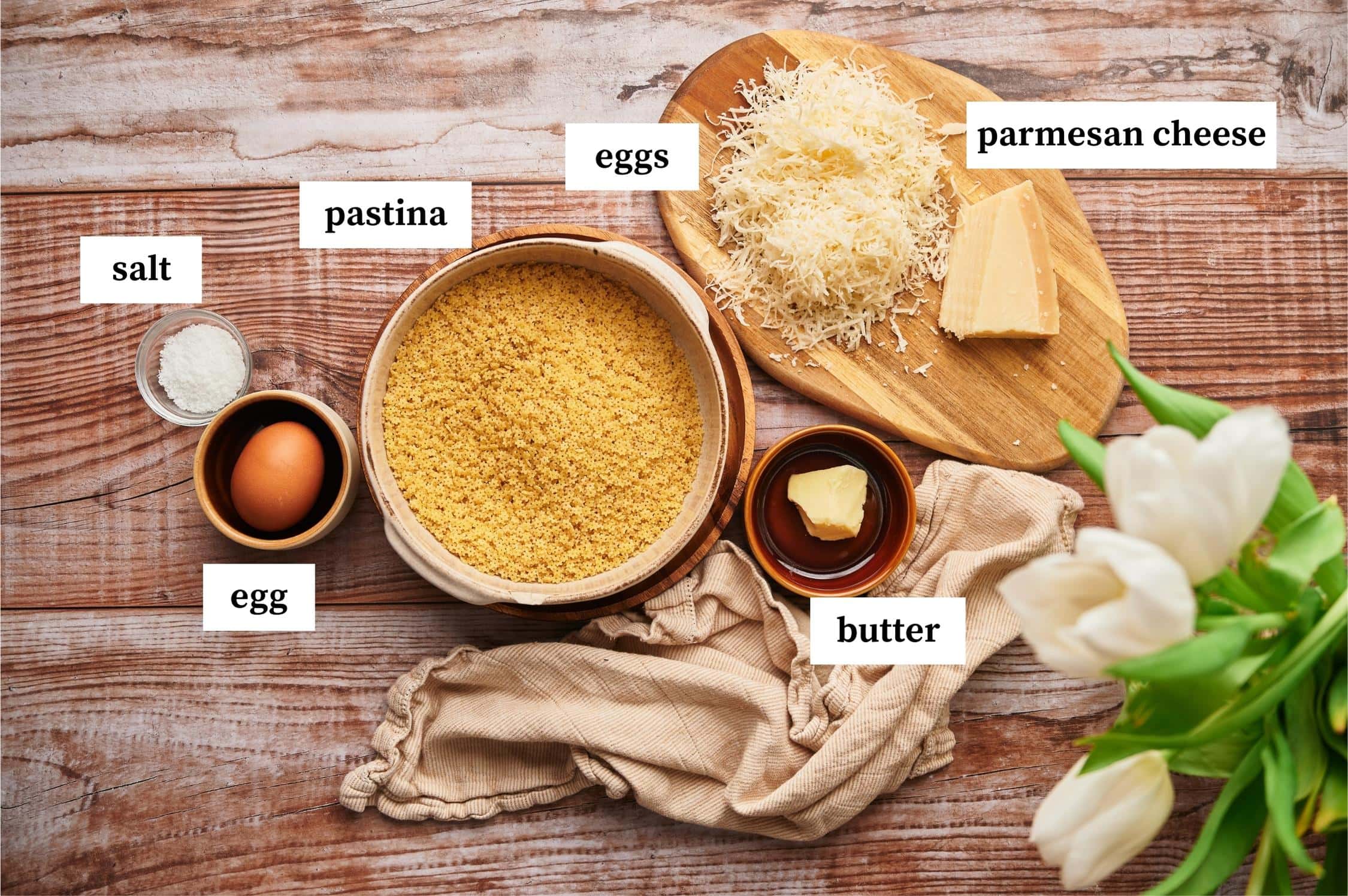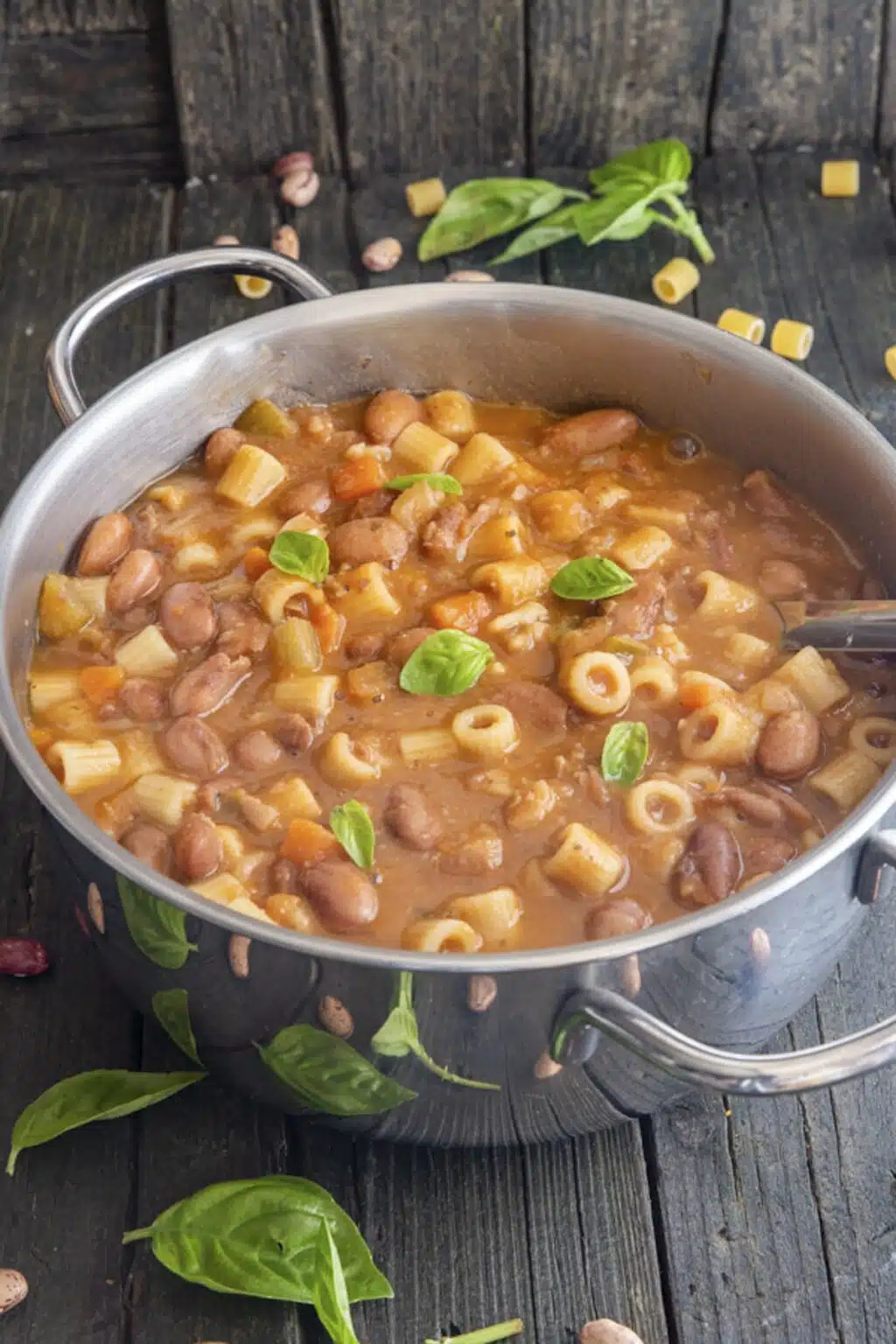One of the first solid foods that kids eat in Italy is tiny little pasta generically called pastina, either in broth or mixed with cheese, veggies or some sort of homogenized food. So what exactly is pastina? Pastina literally means tiny pasta shape, and it can come in all different forms, from dots and little stars to rings or mini tubes.
Cheesy pastina is a classic Italian comfort food that is creamy, cheesy and delicious. One could even say that it is the Italian mom version of the American comfort food mac n’ cheese. This recipe has cheese, butter and an egg, but pastina can also be served with broth or vegetable soup.
What do you need to make pastina?
This creamy, cheesy comfort food is one of the easiest recipes we have ever shared, and we guarantee your kids will love it, even the big ones!
large pot
cheese grater
knife
wooden spoon
pasta strainer or colander
small bowl
This recipe is packed with protein and is delicious. You can make it in about 15 minutes from start to finish. Get started now and dinner is solved in no-time!
What ingredients are used in cheesy pastina?
Here are the few, simple ingredients needed to make the cheesy tiny pasta most Italian American moms raised their kids on, a true classic Italian comfort food.
Pastina dried packaged pasta (0.66 lb / 300 grams) – you can find pastina in any supermarket and there are lots of different brands to choose from, such as Barilla and Ronzoni pastina. There are also tons of different shapes and sizes, such as acini di pepe (shaped like a peppercorn), star shape (little stars often with holes in the middle), orzo (which is a pastina shaped like barley grain), anellini (little rings) and many more!
Butter (2 Tablespoons) – you can use either salted butter or unsalted butter (just add salt) or you can substitute with a mild flavored extra virgin olive oil instead.
Parmesan Cheese (1/2 cup + for topping) – grated Parmiggiano Reggiano or Parmesan cheese or any other semi-hard cheese that you love will work.
Egg (1) – let it come up to room temperature before using it.
Salt (to taste) – be sure not to add too much additional salt as the cheese is already salty, be especially careful if you are using salted butter.
Black pepper (optional) – some recipes call for black pepper, and you can definitely add it if you want a stronger flavor.
How to make cheese pastina step by step
Whether you choose tiny star shaped pasta, acini de pepe or little rings, this dish can be made in a few easy steps.
Bring a large pot of water to boil on the stove top.
Grate a little more than 1/2 cup of Parmesan cheese and set aside.
When the water is boiling, add a small amount of coarse salt to the water (optional) and add the pastina, stirring occasionally. Be sure to read the instructions on the package for the specific type of pastina so that you cook it for the correct amount of time, which can be anywhere from 5 to 10 minutes, depending on the size.
In a small bowl, beat the egg and then add salt, a 1/4 cup of pasta cooking water and the 1/2 cup shredded Parmesan and mix well.
When the small pasta is ready, drain it in a colander and put it back in the pot it was cooked in.
Over low heat, add the butter in bits and then the egg and cheese mixture to the pasta and stir constantly for a minute or two or until the egg goes from shiny and raw to matte and cooked. Turn off the heat.
Sprinkle grated cheese on top and serve immediately in individual bowls.
Expert tips for making pastina
Don’t make scrambled eggs. Be sure to add warm pasta cooking water to your egg and to stir it quickly in to the cooked pasta and not to cook for too long, all of these can make your eggs turn into scrambled eggs instead of a creamy sauce.
Add milk for creaminess. If you want an even creamier pastina, you can substitute warmed milk for the cooking water when mixing the egg and cheese together.
Pastina variations
Pastina in brodo. Pastina in broth is another of our favorite pastina recipes. Create a chicken stock broth by boiling water with chicken, 1 peeled carrot, 1 peeled onion, 1 stalk of celery and a little tomato sauce, pepper and salt for several hours. Boil the pasta in a separate pot, drain when al dente and put directly into single-serving bowls and then laddle the chicken broth over it with a sprinkling of cheese on top and you have pastina in brodo.
Add something extra. If you are feeling creative, this pastina recipe is great with little additions as well. Try stirring in diced ham, cooked peas or broccoli, different types of grated cheese (like cheddar, swiss, or whatever you love) or make it pop with black or cayenne pepper.
Try other comforting recipes:
Authentic Italian Minestrone Soup Recipe
Authentic Italian Wedding Soup Recipe
FAQ
How long does pastina last?
Pastina is best served warm right after you make it. If you have leftover pastina, you can put it in an airtight container and store in the fridge for one or two days. To reheat, add a little water to a saucepan and put over low heat. Add the leftover pastina and heat stirring frequently but gently until warmed through. Add just a bit of Parmesan to your bowl of pastina and serve.
What types of pasta can be used for pastina?
Any tiny pasta will work in this recipe, so feel free to experiment with different shaped pasta and brands such as Barilla or Ronzoni pastina.
What is the best way to cook pastina?
Pastina is usually cooked in boiling water, following the directions on the box for the length of time it should be cooked. It can also be cooked directly in chicken broth or soup and served warm.
What is the difference between orzo and pastina?
Orzo is a shape of pastina (little pasta) that resembles grains of barley. There are many other shapes of pastina, which simply means little pasta, such as stars, dots, rings, shells ecc.
What is the difference between pastina and risotto?
Pastina is a small pasta shape made from wheat flour while a risotto dish is made with rice cooked in broth with other flavorings usually.
Cheesy Pastina
Ingredients
Instructions
Notes
Add milk for creaminess. If you want an even creamier pastina, you can substitute warmed milk for the cooking water when mixing the egg and cheese together.




